The Covid-19 lockdown has brought into clear focus the need for KPFA programmers to be able to connect with listeners in the same quality way without having to be in the building. Fortunately, thanks to the ubiquity of fast internet and affordable audio gear, it’s now possible to broadcast or podcast from almost anywhere. The purpose of this page is to get you started on this path toward a more flexible, sustainable KPFA. Let’s begin!
Here are the basic ingredients of a home broadcasting/podcasting studio:
- A quiet place to set-up with dead acoustics (think closet, not kitchen)
- A computer with plenty of storage connected to the high-speed internet
- A broadcast quality microphone and headphones
- A computer interface to connect everything together
- Accessories such as cables, a mic stand, windscreen…
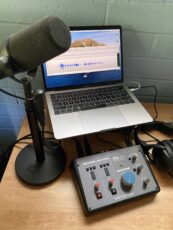
With So Many Gear Choices, What Is Right For You?
Your setup should match your immediate and near-term needs. Will you need to run more than one microphone? Will you be playing tracks from your music library? Any phone interviews? Live music performances? Will you be live on-air or producing the program in advance? An outline of your needs will be your roadmap for your hardware, software and workflow choices.
And of course cost can be an important factor. The good news is that the mass market for audio tools spawned by podcasting and home music recording has resulted good, affordable options to meet your broadcast requirements.
Here are my three levels of recommendations for you.
Entry Level
If your needs are simple, you can get going with a USB mic — a microphone with a digital interface built-in so that the unit can plug directly into a computer via a simple USB cable. To avoid headphone delay (latency), a small headphone amp is built into the mic as well. This is a basic solution if you only need one mic and a computer to do your show.
Here are a few solid performers: (click on each for product links)
1. Audio-Technica AT2020USB+ Cardioid Condenser USB Microphone
2. Rode NT-USB Condenser Microphone
3. Rode Podcaster USB Broadcast Microphone
4. Blue Yeti Pro Studio Condenser USB Mic
5. Apogee HypeMic
Just add a mic stand or boom, some closed-back headphones (not earbuds), a pop screen and computer software and you’re ready to go.
Digital Audio Workstation (DAW) Software
For speed, simplicity and features like automatic levels, Hindenburg is a great place to start, especially if you are producing a music show. And it is sufficiently powerful that you may never outgrow it. Other options include Audition, Audacity, WavePad, Pro Tools, Garage Band and my favorite, Twisted Wave.
If you already have access to a broadcast quality microphone, then a simple digital interface will connect it to your computer and headphones.
- Focusrite Scarlett Solo 3rd Gen USB Audio Interface
- Focusrite Scarlett 2i2 3rd Gen USB Audio Interface
- MOTU M2 2×2 USB-C Audio Interface
- Audient iD4 USB Audio Interface
Or you may prefer a more full-featured USB Mixer
- Behringer XENYX Q802-USB
- Behringer Pro Mixer DJX900USB 4-channel DJ Mixer
- Mackie ProFX6v3 6-channel Mixer with USB and Effects
- Zoom Livetrack L-12 12-Channel Digital Mixer/Recorder
If you want to go the interface route and need a microphone or two to go with it, here are some solid, affordable choices.
- Electro-Voice RE320 Cardiod Dynamic Broadcast Microphone
- Rode Procaster Cardiod Dynamic Broadcast Microphone
- Sennheiser MD 421 II Cardiod Dynamic Microphone
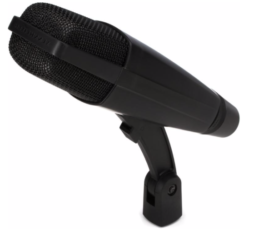
Headphones
There are many good options available. Products at different price points will deliver a different mix of comfort, durability, accuracy and price. Professional headphones will enable you to hear problematic audio (plosives, noise, uneven levels, etc.) more easily and voices will sound more natural. Earbuds and wireless bluetooth devices are to be avoided. Instead, look for corded “closed back” headphones that seal out external noises and seal in the audio so that it doesn’t get picked-up by your microphone (feedback).
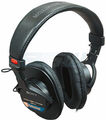
Mid-Level
If you are able to invest a little bit more, this gear delivers next-level results and reliability.
Microphones:
- Shure SM7B Cardioid Dynamic Vocal Microphone
- Aston Stealth Cardioid Active Dynamic Broadcast Microphone
- Electro-Voice RE27N/D Cardioid Dynamic Broadcast Microphone w/Neodymium Capsule — This is the mic used throughout KPFA
Note: The SM7b is a quiet (low output) mic and may require a Cloud Lifter. The Aston has a boost circuit built-in. For more, see the Mic Booster link at the bottom of this page.
Here are some interface options known for their exceptionally clean preamps and digital converters.
The new RodeCaster Pro is all-in-one unit is designed specifically for the home podcaster/broadcaster. It connects to a computer via USB and it records to its own SSD memory card. Suitable for up to three guests + host. It also connects to smartphones for interviews. Lots of features yet simple to use.
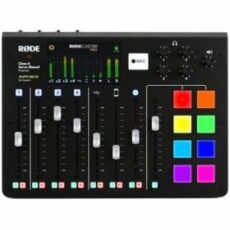
Advanced Level
These products will serve you well, not only as a KPFA producer, but in professional voiceover, audiobooks, music, film, video and game production.
This is what we use at RadioCamp to produce UnderCurrents: Sound Devices USBPre2. 
These are also excellent choices: Apogee Duet or Quartet or Universal Audio Arrow.
The Beyer Dynamic DT 770 Pro (250 ohm) headphones are comfortable, accurate and a good match for all of the interfaces mentioned here.
If you want to make high quality field recordings (voice, music, VR or other sounds), the Sound Devices MixPre is both a multitrack recorder and a digital interface for your computer. Zoom also offers similar products.
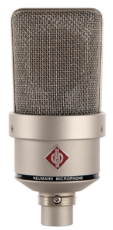
Condenser microphones are more sensitive and detailed. They require more care and technique to use but deliver a lush vocal sound. While they are expensive, they will hold their value:
- Neumann TLM 103 Large Diaphragm Condenser Microphone
- Neumann U 87 AI Large Diaphragm Condenser Microphone
- Schoeps MINICMIT Shotgun Microphone
- Josephson C42 Cardiod FET Condenser Mic – Matched Pair
- Manley Reference Cardioid Tube Condenser Microphone
Whatever you choose in whichever price range, be sure to check availability with your vendor. Some products are backordered and this may delay your plans. Also, take a look at any bundles that vendors offer.
Here are a few hard-won lessons learned in the real world — keep them in mind:
- Cheap microphones sound cheap. The ones you’re used to at KPFA cost around $500, but you can get a full rich sound for somewhat less. Always use an external pop filter.
- Consider adding a cough button, especially if you’ll be feeding live.
- Hard drive clutter is a big hassle and poses a risk to good recordings. If you’re recording via your computer software, it’s wise to dedicate an external drive to your audio projects. You’ll need about 1GB per hour (stereo). Additional tracks, outtakes, versions, backups, archives — all take up additional space and after a few shows it can really add up. In the ‘90s, storage cost $1,000 per GB, now it’s down to less than .04 cents per GB. Storage is cheap! If you’re building a large music library, get a second drive for regular backups because drives can crash without warning. Experts say an archive doesn’t exist unless it is in three places (e.g. on-site, off-site, cloud.)
- When you add music to your digital library, maintain CD quality by using lossless compression such as Apple Lossless (iTunes/Lossless) or FLAC. You’ll enjoy all of the meta tagging convenience (artist, label, album info, etc.) without degrading the sound in any way. It’s always best to start with high quality before compressing to .mp3 to send to KPFA.
- To prepare for a live remote, reduce other traffic on your household internet while you are broadcasting. If someone is in the next room uploading files, video conferencing, playing online games, etc., it could degrade the quality of your signal or even cause dropouts.
Here are some more links to further your understanding of these topics — great tips, tricks and insights. Remember, building your own broadcast capacity at home is a process. Give yourself plenty of extra time to produce your shows. Along the way you’ll discover satisfying new ways to make the tools work for you.
Suggested Vendors: Sweetwater BSW B&H Photo Vintage King
Resource Links
- Live Remote Shows – Connecting to KPFA On Air
- Instructions to Submit Prerecorded Programs to KPFA
- About USB mics, mixers and interfaces
- Mic Boosters (The transom.org site is brimming with good info, in English & Spanish)
- Choosing the BEST Microphone for Voiceovers
- EV Microphone Shootout
- Home Voiceover Studio Tutorial
- How to Record & Edit a Podcast in Garageband
- Ear Training Guide
[et_social_share_media]
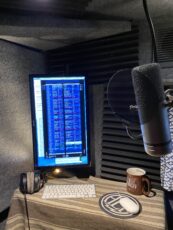
[/et_social_share_media]

